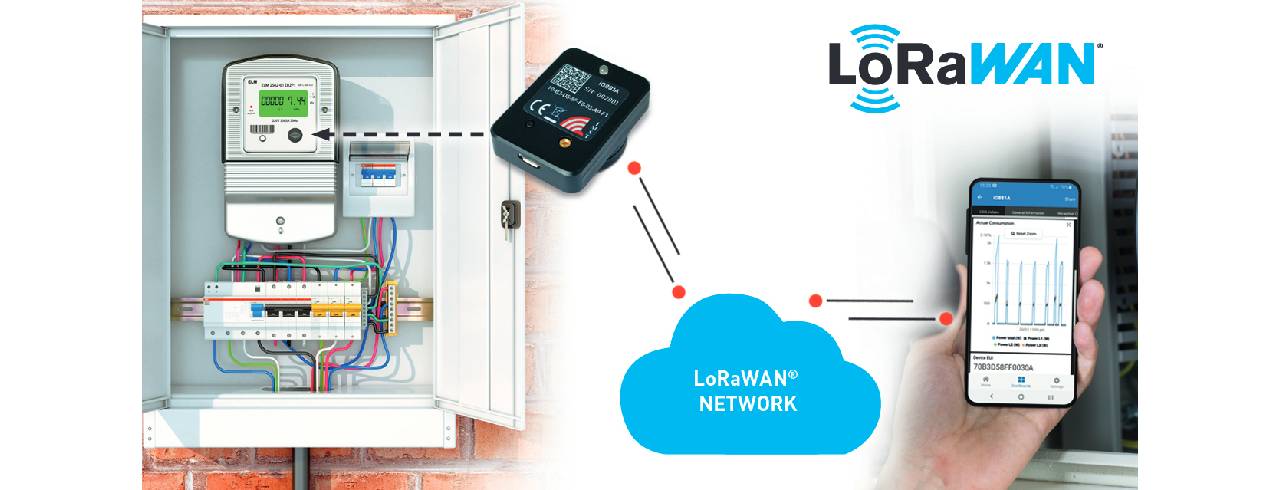Utility firms can gather information remotely and utilize people more effectively by establishing a smart metering infrastructure of sensors and gateways equipped with LoRaWAN devices.

Globally, nations are working to build technology that will aid in comprehensive monitoring and operation control as more cities become urbanized. Cities can monitor and control various applications, such as electricity, water, and gas meters, lighting, waste disposal, and parking, using a uniform Internet of Things (IoT) platform.
Conventional utility meter monitoring procedures need manual reading and measuring by employees in the field or remote reading utilizing a short-range wireless technology, generally in a drive-by scenario. Several wireless technologies may need help to reach meters since they are frequently found underground, indoors, or in crowded metropolitan areas. Utility businesses can collect data remotely and utilize staff more effectively to simplify operations by deploying LoRaWAN module for smart metering with sensors and gateways.
The spread spectrum modulation method, LoRa, was developed using the already-existing Chirp Spread Spectrum (CSS) technology. The trade-off between sensitivity and data rate, and bandwidth is provided. It uses orthogonal spreading parameters, enabling the network to adaptively optimize each particular end node's power and data rates to maintain end-node battery life.
As there is little requirement for a link budget, a sensor placed close to a gateway, for instance, should transmit at a low spreading factor. A sensor several miles from a gateway must transmit with a much higher spreading factor to get higher RX sensitivity at a lower data rate. This is because the higher spreading factor will result in higher processing gain.
Semtech's reliable, affordable, and low-power LoRa devices can replace DSSS systems without very precise reference clocks. By creating a chirp signal that constantly changes in frequency, LoRa modulation spreads the signal's spectrum. This approach has the benefit of equal timing and frequency offsets between the transmitter and receiver, considerably reducing the complexities of the receiver design. This chirp's spectral bandwidth and frequency bandwidth are the same. A higher data rate chipping process is used to modulate the sensor data signal onto the chirp carrier signal.
To increase the signal's robustness, LoRa modulation also contains a dynamic error-correcting system. A fifth bit of parity data is sent for every four bits of information.
The LoRa devices and LoRaWAN protocol have the following key characteristics, which make them the best choice for smart metering and other applications related to smart cities:
Deep penetration in crowded urban situations (indoors or underground) and connecting to sensors up to 30 miles away in rural areas are made possible by a single outdoor LoRaWAN gateway.
It enables device tracking without the need for GPS or additional power.
The LPWAN protocol based on LoRa devices is called the LoRaWAN open specification. It fosters interoperability between software, IoT solution providers, and telecom operators to quicken the adoption and deployment of both private and public networks.
Depending on the application, the LoRaWAN protocol allows for a battery life of up to 10 years, which is unparalleled for low-power devices. To provide smart metering or utility management solutions, a large number of businesses use LoRa. There were tens of millions of LoRa-based smart meters installed in 2018.
As a result of ongoing urbanization and consumer demand for greater efficiency, utility companies are now required to expand their capacity while also designing new solutions to improve the supervision of their current assets. Utility and metering firms can gather data remotely and deploy staff more effectively to streamline processes by establishing a smart utility network of sensors and gateways using LoRa devices and the LoRaWAN protocol.
Smart metering has become one of LoRaWAN's most lucrative vertical markets thanks to its excellent value proposition to utilities, flexibility to install and use private and public networks economically, interoperability at the next work and device levels, and other factors.
With its scalable, secure, and dependable solutions, LoRaWAN has become a recognized smart-meter pioneer.
LoRaWAN for smart metering solutions enables clients to provide more effective ones, lowering waste and utility costs. Introducing cutting-edge connections will motivate the utility sector globally to adopt innovations. Utilities will keep "becoming smarter" by utilizing their data and bandwidth resources to enable an array of linked devices that will boost system security, dependability, and resilience while reducing costs and enabling real-time surveillance and communications. The businesses adopting this technology are ideally situated to be leading figures in this field as more cities shift to smarter, more sustainable, and more dependable LoRaWAN systems for metering and other smart city applications.